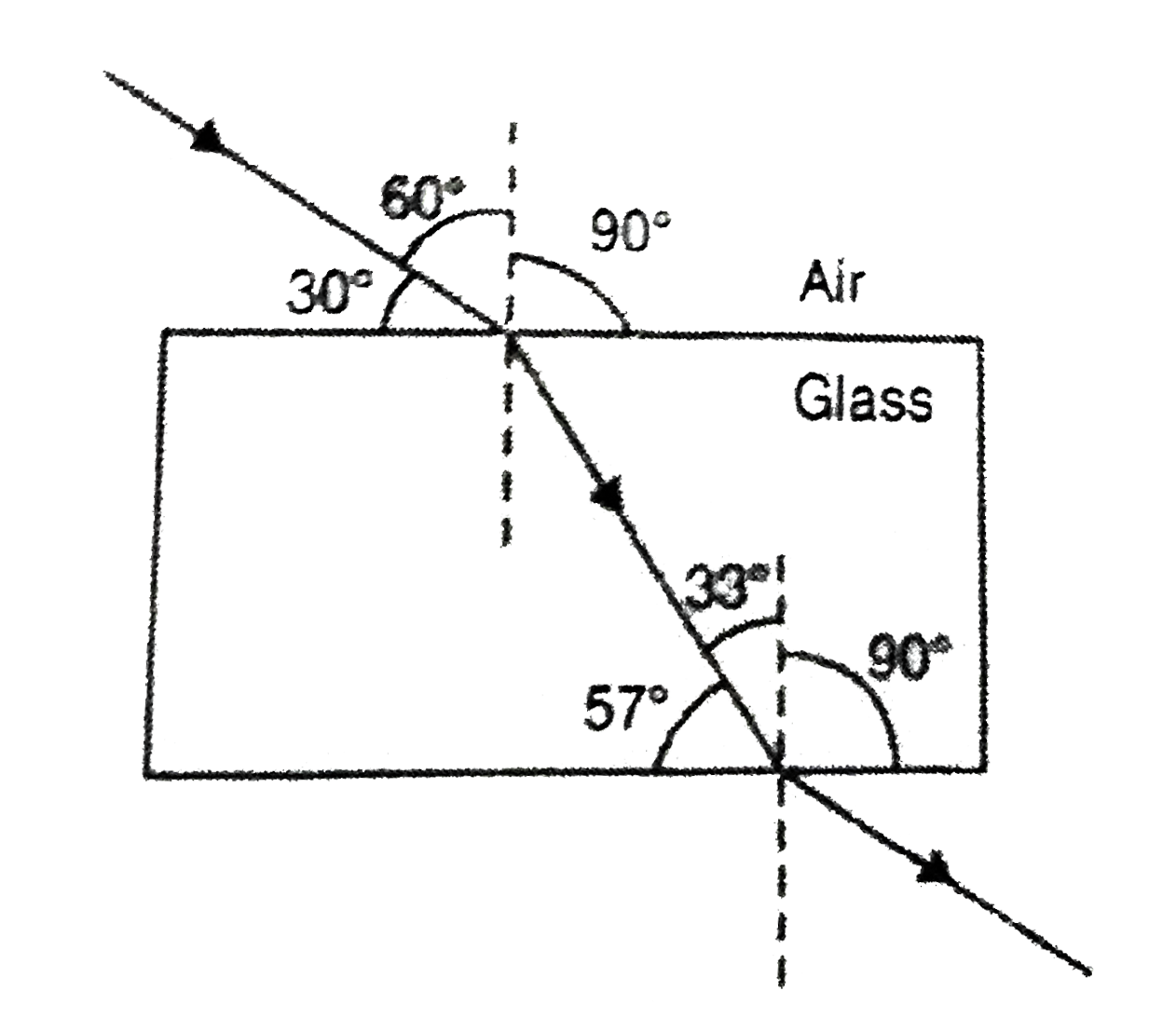Show that a ray of light incident obliquely on the parallel sided glass slab emerges out parallel to the incident ray.
Consider a rectangular slab of refractive index n.
Let us consider, i be angle of incident and r, be the angle of refraction at the boundary AB.
According to Snell.s law nga=sinisinr1 .....(i)
At point Q, the ray of light again suffers refraction Air (a) and comes out of the glass along QR. For refraction at Q,r1, is the angle of incidence and e is the angle of refraction. According to Snell.s law.
nag=sinr1sine .......(ii)
We know that,
nga=1nag⇒sinisinr1=sinesinr1
⇒ ∠i=∠e
This shows that a ray of light incident obliquely on the parallel sides glass slab emerges out parallel to the incident ray. However the incident ray is laterally displaced.

Similar Questions
Draw a ray diagram to illustrate how a ray of light incident obliquely on one face of a rectangular glass slab of uniform thickness emerges.
View SolutionLateral displacement of ray passing through a glass slab
A ray of light is incident on a parallel sided glass slab of refractive index n and thickness t as shown in Fig. 34-2. Find the lateral displacement of the ray as it passes through the slab.
View Solution
Knowledge Check
A light ray is incident at an angle 45∘ on parallel sided glass slab and emerges out grazing the vertical surface. The refractive index of the slab is
A√32B√52C√32D√52A ray of light is incident on a parallel-sided glass slab as shown in the figure. The angle of refraction for this ray of light is likely to be :
 A60∘B33∘C57∘D30∘
A60∘B33∘C57∘D30∘In the experiment to trace the path of a ray of light through a parallel sided glass slab, a student measured the angles of refraction for three different angles of incidence. He will find that :
Aangle of refraction is always equal to the angle of incidenceBangle of refraction is always smaller than the angle of incidenceCangle of refraction is always greater than the angle of incidenceDangle of refraction can be smaller or greater than the angle of incidence depending on the refractive index of glass slab
When a ray of light travelling in air enters obliquely into a glass slab, it is observed that the light ray emerges parallel to the incident ray but it is shifted sideways slightly. Draw a labelled ray diagram to illustrate it.
View SolutionDraw a neat and labelled diagram to show the path of a ray of light in air and glass when the ray is incident obliqely on a glass slab. Show the (i) incident ray (ii) refracted ray (iii) emergent ray (iv) angle of incidence (v ) angle of refraction (vi) angle of emergence in the diagram.
OR
Draw a neat and labelled diagram to show refraction of light through a glass slab.
View SolutionA ray of light incident on glass slab finally emerges out of it. The ray which emerges out is called :
View SolutionDraw a ray diagram to illustrate how a ray of light incident obliquely on one face of a rectangular glass slab of uniform thickness emerges.
View SolutionA ray of light is incident upon a parallel sided transparent slab of thickness 9 cm at an angle of incidence 60° • If the angle of refraction is 30°, the lateral displacement of the light ray is
View Solution
